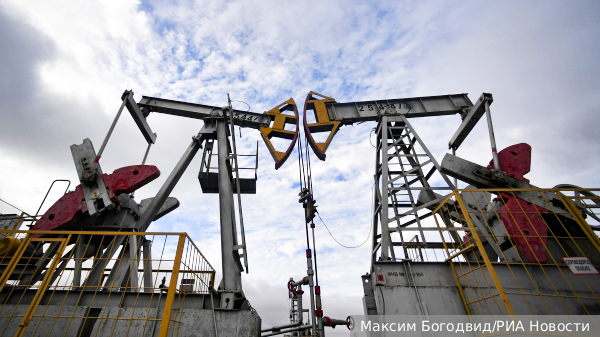
High oil price and ruble depreciation benefits Russia
By Rhod Mackenzie
Since the beginning of 2023, the price of Russian oil in rubles has increased by 1.5 times and has exceeded 8 thousand rubles per barrel. This is brought about not only by the high price of oil itself and the low exchange rate of the ruble, but also by the fact that Russian oil exporters "got around" the price ceiling set by the sanctions in the summer. The oil companies are now making record profits. For other sectors of the economy, however, the joy of the oil workers' success is somewhat overshadowed by the high cost of fuel.
Last week, Deputy Prime Minister Alexander Novak pointed out that the price of oil in roubles had exceeded 8,000 roubles per barrel.
"I note that this has happened precisely in the last two months, when several factors have had a simultaneous impact: the rise in world oil prices, the reduction of discounts on sales of the Russian Urals brand and the weakening of the ruble against the dollar. Of course, this in turn affected the budget capacity".
"However,at the same time, we see that the price of oil in rubles has increased one and a half times since the beginning of the year and in September exceeded 8 thousand rubles per barrel," the Deputy Prime Minister continued. "Therefore, at the same time, the export alternative for petroleum products has increased," Novak said at a meeting (via videoconference) with Vladimir Putin, where the issues of limiting fuel prices were discussed.
Its worth noting that for a long time, during the last decade, the oil price in rubles was about 3-4 thousand rubles, it then rose towards the end of the decade, but then fell sharply at the beginning of the covid pandemic. Since the autumn of 2021 it exceeded 5 thousand rubles, and then in the spring it rose sharply, so that even at the current level it is not yet at a record level.
Do bear in mind that this price does look set to last for some time. One of the two parameters that determine the ruble price of oil, which is quoted in US dollars, is the exchange rate. There are no signs of a significant strengthening of the heavily depreciated ruble, and the maximum level that market analysts predict is 90 rubles to the dollar (the official exchange rate on 3 October was 98.47 rubles to the dollar).
The second parameter is, of course, the actual price of oil, and it is predicted to either rise significantly (Urals currently is $82) or consolidate slightly above current levels. So the oil price is higher, the dollar/ruble exchange rate is lower, but the result is about the same.
It is against this backdrop that the shares of oil companies on the Russian stock market are showing strong momentum and reaching historic highs.
In general, oil prices are now being adjusted against the backdrop of profit-taking by speculators, notes Igor Galaktionov, stock market analyst at BCS World of Investments. After a positive third quarter, hedge funds and other asset managers are reducing their exposure to oil, which consolidated to near fair levels for the fourth quarter. According to the analyst, the $90-95 range looks stable, provided that the OPEC+ production cut policy is maintained and there are no serious problems in the global economy.
Meanwhile, Igor Galaktionov continues, the ruble price of a barrel of oil has exceeded 8,000 roubles for the second time in history. This was made possible by the weakening of the ruble: the USD/RUB currency pair approached triple digits again on Monday. The growth is due, among other things, to short-term factors, but for the market 100 rubles. to the dollar acts as a psychological mark.
"It is likely that the regulator, represented by the Central Bank, is closely monitoring the situation and will soon take measures to curb the fall of the Russian currency. The situation is still favourable for domestic oil companies. At current prices, exporters are making record profits per barrel, which can be converted into generous dividends for 2023," the analyst notes.
The price of Russian Urals oil did average $59.54 per barrel from the beginning of the year, but last month it crossed the $80 mark and stopped at $83.08, says Alexander Solovyov, a financial analyst at Finmir. This threshold, he notes, exceeds by more $20 the price ceiling set last December, which prohibits the United States, Britain, EU members and other countries from buying Russian oil at a price above $60. Russian oil exceeded that threshold in July.
According to the analyst, this restriction by "unfriendly countries" is no longer effective and will become completely irrelevant by the end of the year, given the current reduction in oil production and exports by Russia and Saudi Arabia and the projected growth in raw materials. In turn, the ruble's 45% weakening since the beginning of the year gave Deputy Prime Minister Alexander Novak the basis to announce the 1.5-fold increase in the value of the Russian commodity.
